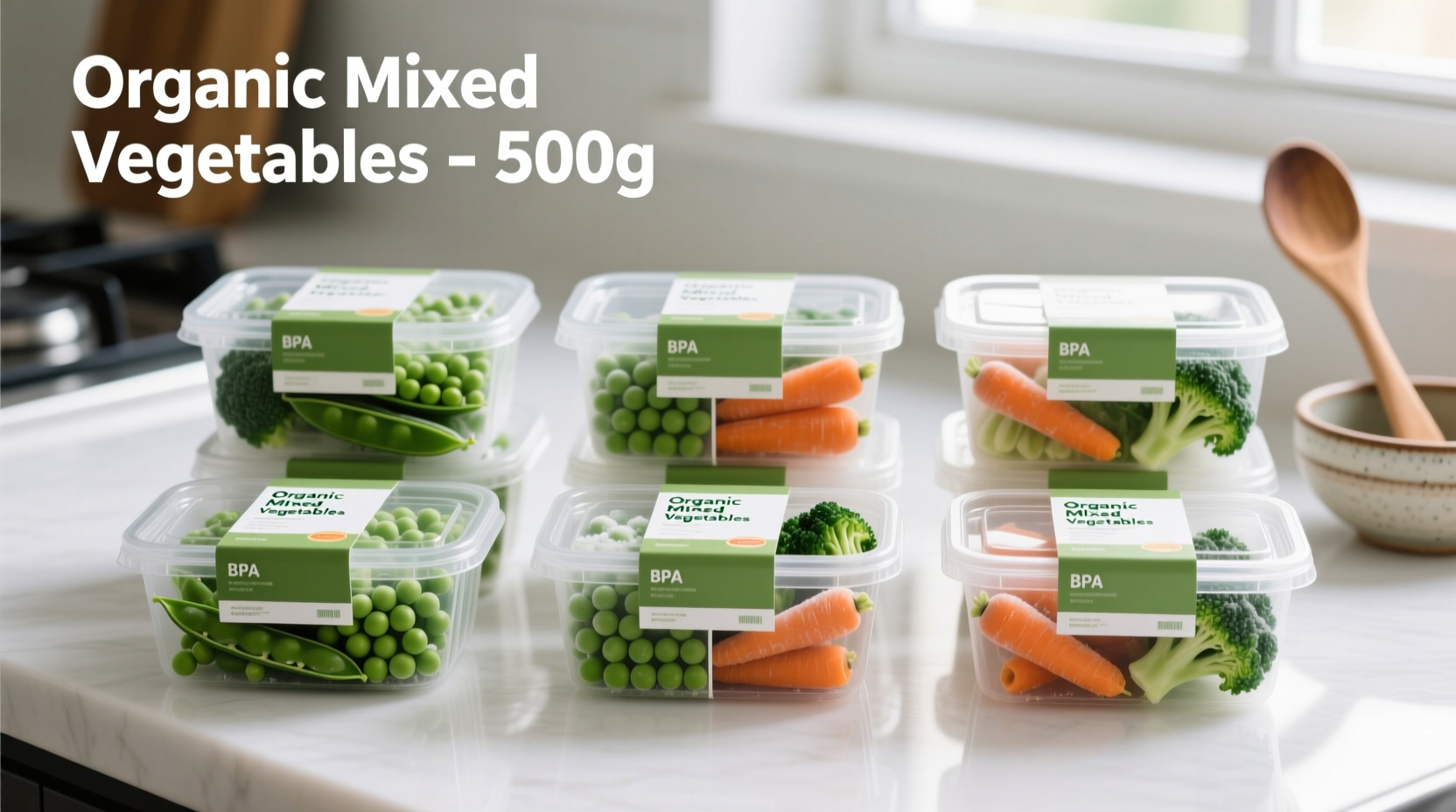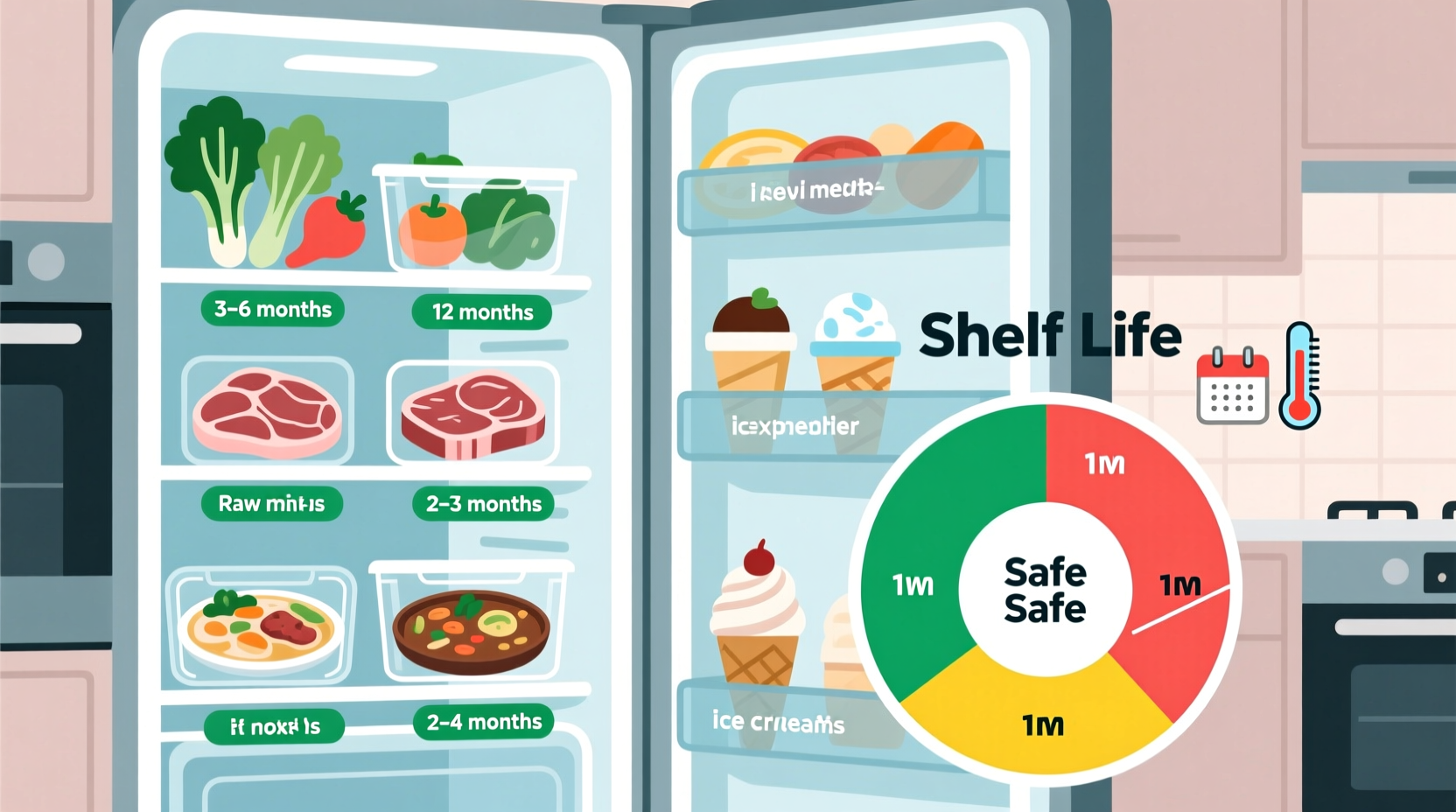Ever opened your freezer only to find mystery containers with unidentifiable frost-covered contents? You're not alone. Understanding proper freezer storage times prevents food waste while ensuring meals retain their flavor and nutritional value. This guide delivers science-backed timelines so you can maximize your freezer's potential without compromising safety or taste.
The Science Behind Freezer Storage Durability
Freezing halts bacterial growth that causes food spoilage, making properly frozen food safe to eat indefinitely. However, quality degradation still occurs through enzyme activity and oxidation. The USDA confirms that while frozen food remains safe indefinitely at 0°F (-18°C), texture, color, and flavor deteriorate over time due to:
- Freezer burn - When moisture escapes from food, creating dry, leathery spots
- Fat oxidation - Particularly in meats and dairy, causing rancidity
- Enzyme activity - Slowed but not stopped in frozen conditions
These processes accelerate when freezer temperatures fluctuate above 0°F or packaging isn't airtight. Maintaining consistent temperature and proper wrapping are crucial for maximizing storage duration.
Freezer Storage Time Guide by Food Category
Refer to this comprehensive chart for optimal freezer storage durations. These timeframes represent when foods maintain best quality - they remain safe beyond these periods but may experience noticeable quality decline.
| Food Category | Optimal Storage Time | Quality Warning Signs |
|---|---|---|
| Raw roasts, steaks, chops (beef, veal, lamb, pork) | 4-12 months | Excessive ice crystals, grayish color, off odors after thawing |
| Raw ground meats | 3-4 months | Rancid smell, slimy texture after thawing |
| Poultry (whole) | 12 months | Freezer burn covering more than 25% of surface |
| Poultry parts | 9 months | Discoloration, dry patches |
| Seafood (fatty fish like salmon) | 2-3 months | Rancid odor, mushy texture |
| Seafood (lean fish like cod) | 6-8 months | Excessive ice crystals, dry appearance |
| Cooked meat/poultry | 2-6 months | Watery texture, bland flavor |
| Vegetables (blanched) | 8-12 months | Mushy texture after cooking |
| Fruits | 8-12 months | Soggy texture, loss of flavor |
| Baked goods | 2-6 months | Dry texture, stale taste |
Maximizing Your Freezer's Performance
Storage duration depends significantly on your technique. Follow these evidence-based practices to extend freezer life:
Proper Packaging Techniques
According to the USDA Food Safety and Inspection Service, removing air is critical for preventing freezer burn. Use these methods:
- Vacuum sealing - Removes 99.9% of air, extending storage time by 2-3x compared to other methods
- Freezer bags with water displacement - Submerge bags in water to force air out before sealing
- Rigid containers - Leave 1/2 inch headspace for liquid expansion

Temperature Management
Your freezer should maintain 0°F (-18°C) or below. Install an appliance thermometer to verify actual temperature, as many built-in dials are inaccurate. The FDA recommends keeping your freezer at least 5°F colder than necessary to account for temperature fluctuations when opening the door.
Organization System
Implement a first-in-first-out system by placing newer items behind older ones. Label everything with contents and freeze date using freezer-safe markers. The National Center for Home Food Preservation found that unlabeled items get overlooked and often exceed recommended storage times by 300%.
When Frozen Food Has Gone Too Far
While frozen food never becomes unsafe if kept frozen, quality eventually deteriorates beyond acceptable levels. Discard items showing these signs:
- Severe freezer burn covering more than 50% of the surface
- Unpleasant odors after thawing (not to be confused with normal freezer odors)
- Excessive ice crystals that don't melt quickly during thawing
- Discoloration beyond normal freezing effects
Remember: If you're ever uncertain about food safety, follow the USDA's guidance to "when in doubt, throw it out." Consuming significantly degraded food won't make you sick but will deliver poor culinary results and wasted effort.
Freezer Timeline Evolution: How Recommendations Have Changed
Freezer storage guidelines have evolved significantly as packaging technology improved. Understanding this timeline helps contextualize current recommendations:
- 1940s - Early home freezers had frequent temperature fluctuations; recommended storage times were 1-3 months for most items
- 1960s - Introduction of plastic wrap extended storage by 50% but still limited by air exposure
- 1980s - Vacuum sealing technology entered home kitchens, doubling recommended storage durations
- 2000s - Modern freezers with consistent temperatures and improved packaging materials established current guidelines
- Present - USDA guidelines reflect today's technology but remain conservative to ensure quality across all household conditions
This evolution explains why older family members might insist on much shorter freezer times - their experience reflects outdated technology limitations rather than current capabilities.
Special Considerations for Specific Scenarios
Freezer storage isn't one-size-fits-all. These context-specific factors significantly impact how long food maintains quality:
- Power outages - A full freezer keeps food safe for approximately 48 hours if unopened (24 hours for half-full)
- Vacation preparation - Consolidate items and add ice packs before extended absences
- Altitude effects - Higher elevations may require slightly shorter storage times due to atmospheric pressure differences
- Freezer type - Chest freezers maintain temperature better during power outages than upright models
For households experiencing frequent power fluctuations, consider investing in a freezer alarm that notifies you of temperature changes. The University of Minnesota Extension program found this simple device reduces food waste by 22% in areas with unreliable electricity.
Practical Freezer Management Checklist
Implement these actionable steps during your next freezer organization session:
- Pull everything out and check for ice buildup (defrost if necessary)
- Discard items exceeding recommended storage times
- Group similar items together (meats, vegetables, prepared meals)
- Repackage items using proper freezer techniques
- Label containers with contents and freeze date
- Arrange items with oldest in front (first-in-first-out system)
- Install an appliance thermometer for ongoing monitoring
Completing this checklist quarterly maintains optimal freezer conditions and prevents the "mystery container" problem that leads to unnecessary food waste.
Frequently Asked Questions
Can food get freezer burn and still be safe to eat?
Yes, freezer burn affects quality but not safety. It occurs when moisture escapes from food, creating dry spots. While safe to eat, severely freezer-burned food often has compromised texture and flavor. Simply cut away affected portions before cooking.
Does freezing destroy nutrients in food?
Freezing preserves most nutrients better than other preservation methods. While some water-soluble vitamins like vitamin C may decrease slightly, frozen fruits and vegetables often retain more nutrients than fresh counterparts that have been stored for several days. The key is proper blanching before freezing vegetables.
How can I tell if frozen meat is still good after a year?
Check for excessive ice crystals, discoloration beyond normal freezing effects, and off odors after thawing. Properly packaged meat should maintain quality for 6-12 months depending on cut. If vacuum-sealed and stored at consistent 0°F, it's likely still good, though quality may have declined slightly.
Can I refreeze food that has thawed in the refrigerator?
Yes, if thawed properly in the refrigerator (below 40°F) and refrozen within 1-2 days. The USDA confirms this is safe, though there may be some quality loss from the second freezing cycle due to additional moisture loss. Never refreeze food that has been left at room temperature.
Do freezer temperatures affect how long food stays fresh?
Absolutely. Every 10°F increase above 0°F reduces recommended storage time by approximately 50%. A freezer running at 10°F might only maintain food quality for half as long as one properly maintained at 0°F. Consistent temperature matters more than occasional colder settings.











 浙公网安备
33010002000092号
浙公网安备
33010002000092号 浙B2-20120091-4
浙B2-20120091-4